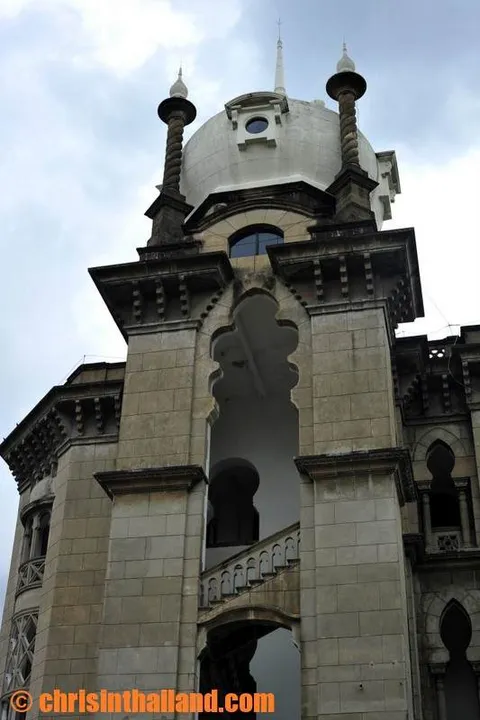
We don’t usually make it a point to visit the more mainstream destinations — but here in Kuala Lumpur, most of the other options are more expensive to enter or simply closed. Don’t get me wrong — simply walking around KL and taking in the diverse city is wonderful, but it was time to reach one of the must-visit places in Kuala Lumpur
Opened in December 1998 and part of a larger-than-expected complex, the Islamic Arts Museum features a couple hours worth of textiles, Korans / Qur’ans, intricate patterns, and designs-a-plenty all around you. After entering, you’ll be told to head up to the 1st floor to see the first exhibition.

The Sheikh Zayed Grand Mosque Complex in Abu Dhabi, UAE — completed 2007 AD.
The Architecture Gallery brings together models of the finest mosques throughout the world. While they’re quite different to my admittedly untrained eye, each mosque features a minaret (where the call for prayer comes from), a dome (creating a spiritual sense of unity), and a qibla (a wall that faces the Kaaba in Mecca). There are a couple dozen to take in, so take your time.

Technology at work — not pictured just to the left is a screen of the world showing the local times for prayer, along with the times for sunrise and sunset.

A rehal, or the wooden stand that holds the Qur’an. They’re as intricate as the rest of the place — this one in particular comes from Ottoman Turkey (c. 1800 A.D.) and is inlaid with mother-of-pearl and tortoiseshell.

A quick look inside a cordoned-off area — the Ottoman room.

One of the next major section highlights Qur’ans from around the Islamic world. Six of the more commonly used calligraphic styles are shown on a wall panel, including a ‘square kufic’ that looks surprisingly like a QR code. The Qur’an above comes from an Indian Sultanate, and is dated from the 15th-16th century A.D.

Learning the scriptures involves writing. Lots of writing. That’s why these wooden tablets (lawh) are used in place of paper in some countries. Once a verse is memorized, the ink is washed off; at graduation, the student writes a few chapters in permanent ink as a sign they’ve mastered the verses. These tablets come from Niger and Mali, and date from the 20th century.

Again, intricate and colorful — the story of the museum, whether you’re looking at the building or the ceilings.

And you thought your plates were fancy.

Aladdin’s lamps they aren’t — but the 18th and 19th kettles and ewer hail from India.
The final exhibition area feature weapons and ceremonial garb — while there is less in the way of patterns and colors, they certainly haven’t given up any style. Look for a 19th century flintlock, possibly from Syria or Turkey. Sure, you could carry around a regular old gun, but why not use something that’s as fierce as you are?
Even with little to no knowledge of the religion, you’ll come to appreciate a heritage that isn’t seen as much in other parts of the world. You’ll be surrounded by locals, but a few tourists are around as well. The souvenir shop should really be thought of as a bookstore first and a place for trinkets a distant second. In any case, it’s well-priced for the 2–3 hour visit, and offers a good introduction to the area as a whole.
Name: Islamic Arts Museum (Muzium Kesenian Islam Malaysia)
Address: Jalan Lembah Perdana, 50480 Kuala Lumpur, 50480, Malaysia (GPS: 3.14298,101.689485)
Directions: From KL Sentral, a taxi would be a cheap and quick option. You can also take the Seremban line one stop to the Kuala Lumpur station. Head up Jalan Perdana, then stay along the main road (the road changes its name to Jalan Lembah). You’ll see the museum on your left.
Hours: 10am-6pm
Admission: 12 Malaysian ringgit.
Phone: 03–2274–2020
Website: www.iamm.org.my


